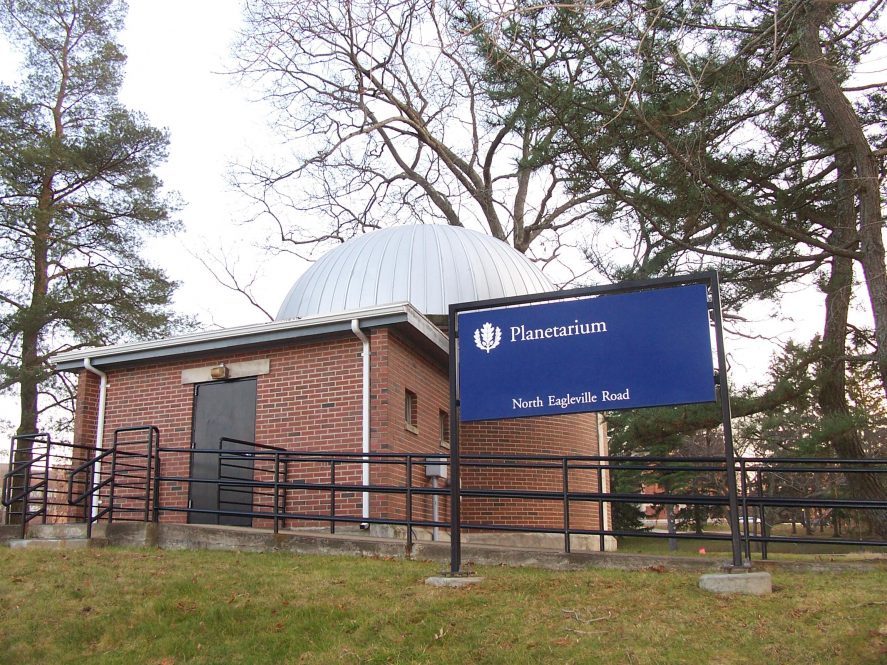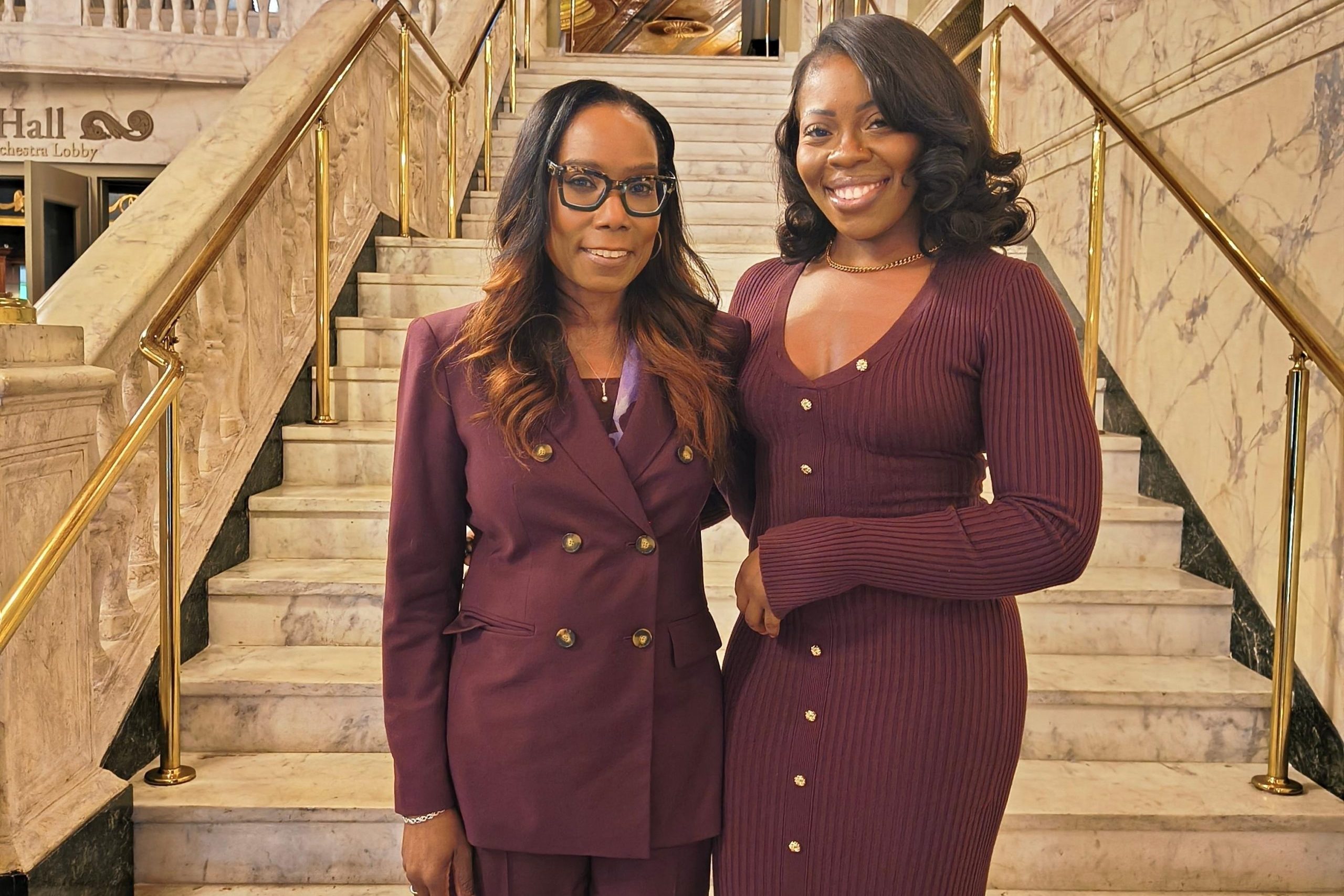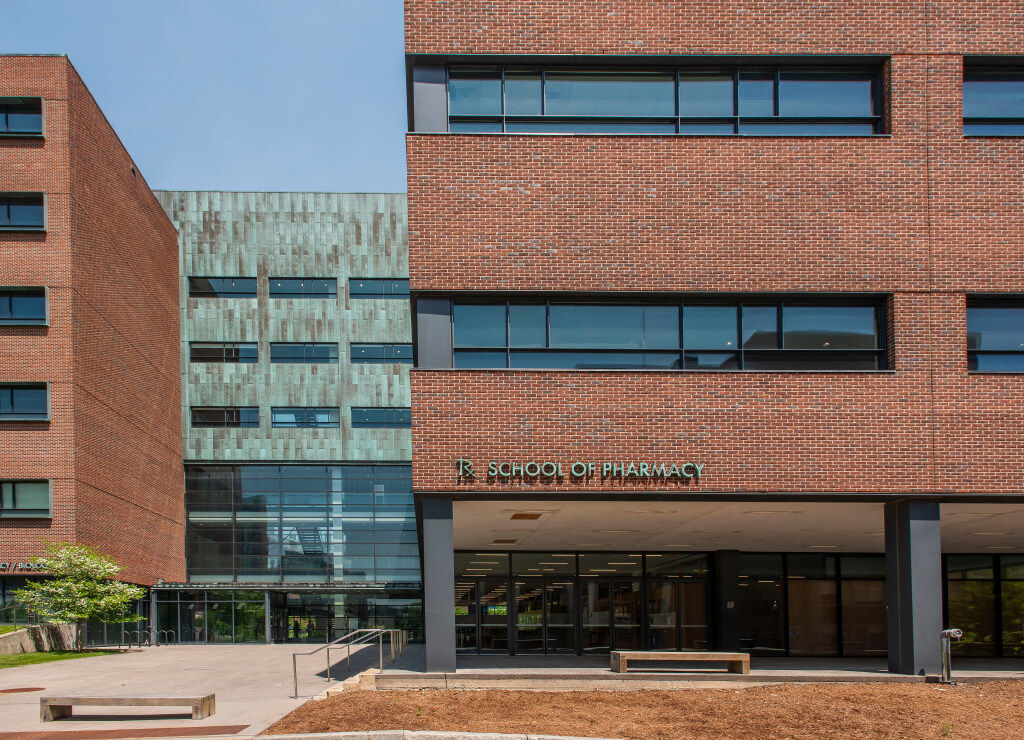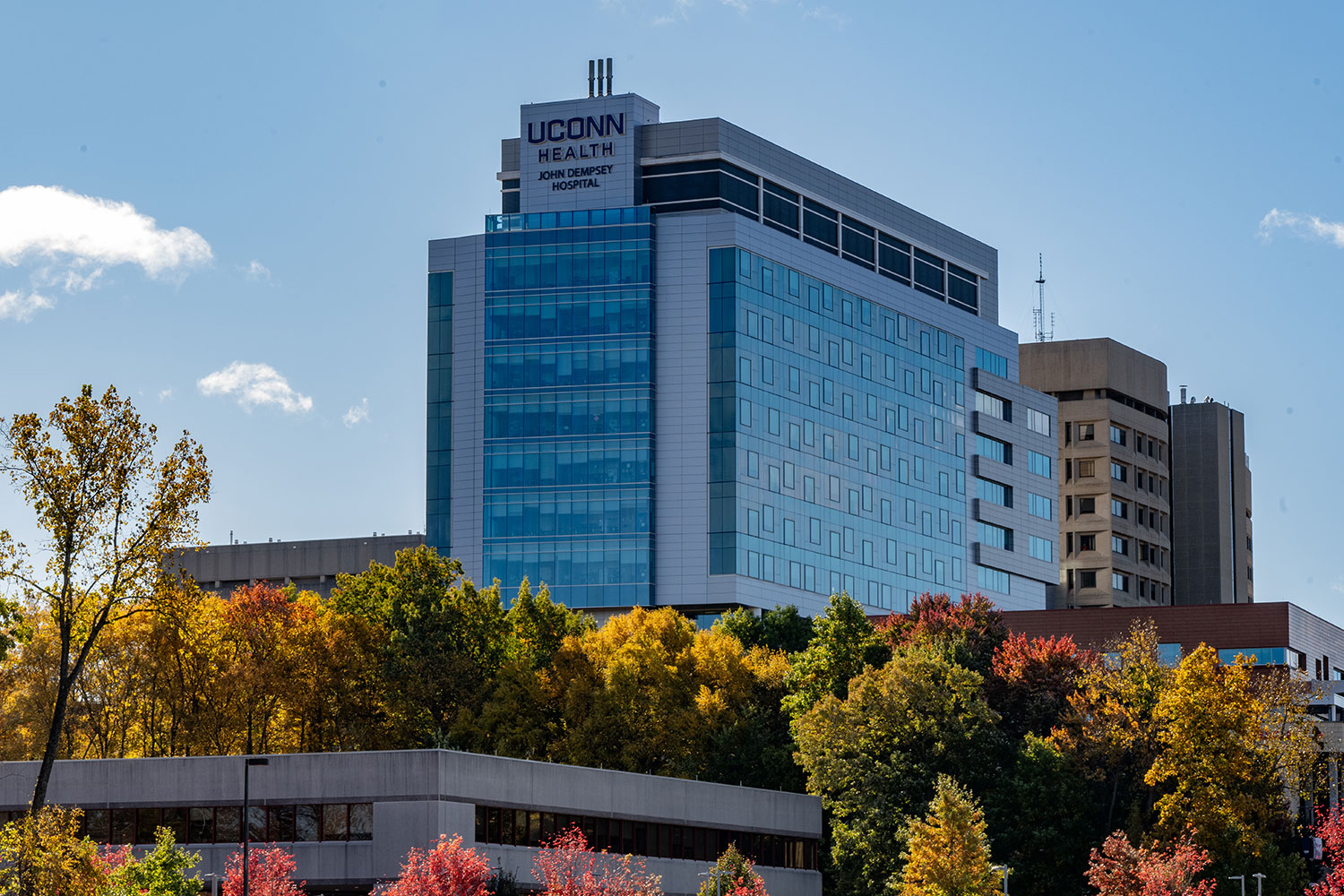Connecticut’s oldest planetarium will soon be back in action.
Once used for education and outreach for UConn faculty, students, and community members, the planetarium fell into disuse in the last several years, but Department of Physics Assistant Professor-in-Residence Matt Guthrie has been working hard with skilled facilities staff, including CLAS Facilities Team Leader Brett DeMarchi, to bring this piece of UConn history back into working order.
The planetarium was built in 1954 and has served since as a hub for sharing astronomical information with UConn and surrounding communities. The late Professor Cynthia Peterson was the planetarium’s curator for many years; it was her favorite place on campus, and she regularly shared her enthusiasm for astronomy by hosting events there.
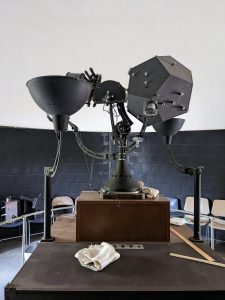
In 2022, when Guthrie first toured the facility with Physics Department Academic Assistant Dave Perry, they were not sure what they would find and felt it was a shame the facility had fallen into disrepair. With encouragement from fellow physics faculty members Jon Trump and then Department Head Professor Barry Wells, Guthrie decided to take the project on, and together with Perry, DeMarchi, and others, they have been slowly but surely bringing the venerable planetarium back into campaigning shape.
“When I first toured the facility, it was still my first year at UConn full-time and I was looking for a project to dedicate all my free time to,” Guthrie says. “From the start, as I was doing research about it and learning more about Cynthia, I felt a sense of responsibility that if I was going to fill at least part of the hole that was left after she retired, we needed the proper recognition for everything that she had done, especially with the planetarium.”
The first time DeMarchi walked into the dome, he says it was like stepping back in time:
“It was almost pitch black and the antique projector was covered in dust — a unique piece of history to marvel at from a time when technology was much simpler!”
DeMarchi says a previous project study with a larger scope had a budget that was unfeasible, but he had some ideas to help keep the costs down while still freshening up the facility without major renovations to the existing structure. A new proposal was submitted to CLAS, accepted, and with funding, the project moved ahead.
Guthrie wanted to be sure the history of the planetarium was preserved, so, in the process of clearing out the facility to make way for new equipment, the team kept whatever they could for posterity, including the original A1 Spitz star and planet projector.
“We put the old projector on display in the physics department to make sure that we are not rewriting the history of the planetarium. That has been the guiding light for how I approach this project. We did buy a new projector, but we’re not changing the internal structure of the building,” says Guthrie.
Shortly after starting this project, Guthrie also started working on the UConn Observatory and both projects have kept him very busy, but he says he is glad to be able to dedicate the time to get these resources back up and running for the department and community.
Guthrie also has student help, including Danya Alboslani (CLAS) ’24 who has helped with both renovation processes.
Alboslani first got involved as a sophomore wanting to learn more about the planetarium and observatory that no one seemed to have details about,
“I wanted to get more information about the planetarium on campus. UConn is a great school with astronomy professors who do amazing work, so if we have a planetarium and an alleged observatory, why don’t we use them?”
Alboslani connected with Guthrie and says working with him on the restoration projects has been amazing,
“Ever since I first contacted him, he’s made me feel very involved in the entire process. Professor Guthrie went out of his way to keep me updated on everything. I helped to write the memorial plaque about Professor Peterson — also a woman in STEM and UConn’s first women physics professor.”
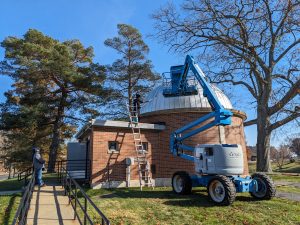
A tricky issue was the planetarium’s 16-foot dome, which had to be resealed, but once that was resolved, Guthrie said the interior work could go ahead. Though it has been a slow process, Guthrie says the end is in sight. The internal painting was completed in January and the external painting will be done as soon as the weather warms up.
DeMarchi says the team is very appreciative of the extensive collaborative efforts from UConn Facilities Operations.
“Every Facilities Shop Supervisor that I contacted was on board to assist. Special thanks to Nate Bedard of Interior Renewals for his help with project coordination and flooring. Chris Gisleson and his team put a lot of effort into sealing the exterior of the dome. Jon Cooke researched the correct reflective paint needed for the interior of the dome and his team painted the structure. Jennifer Peshka provided testing and compliance guidance throughout. CLAS Shared Services student workers Cole Shillington (CLAS) ‘24 and Alex Gervais (CAHNR) ‘24 were a big help with various tasks that came up.”
Though they don’t have a firm launch date yet, Guthrie hopes they will be up and running by summertime. The team plans to install carpeting and purchase new chairs soon. Guthrie says they removed the old projector platform, which was about six feet in diameter, and Perry and Senior Machine Shop Engineer Machinist Ray Celmer are working to make a sturdy stand that will have a small 18-inch footprint which will allow for more flexibility and accessibility in the space.
“Newer planetariums are structuring their seating charts as if there is a front of the building, and that’s where they project the main action of the show, where other things can happen around you,” Guthrie says. “We have the possibility of moving around to make it so that there is a front of the room. That depends on what we want to do and how the building evolves to meet our needs. I wanted to leave that possibility open.”
When deciding on what new projector to order, Guthrie says he chose a company that specializes in portable planetarium projectors, because other than being the oldest planetarium in the state, this is likely the state’s smallest permanent planetarium.
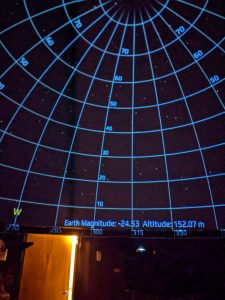
“I went with this projector model because it’s perfect for the size of our dome. The new projector gives users access to around 100,000 pre-made shows, and a bonus is the software is easy to learn so users can write their own planetarium shows. What I’m hoping is that interested astronomy students will be able to lead outreach events with shows they have designed themselves and if they want to get involved it will be lower stress to learn how to use the projector within this cool piece of UConn history.”
Physics Ph.D. student Kelcey Davis is eager for the facility to open and says the astrophysics graduate students and faculty are all very passionate about what they do and are excited this project will provide the opportunity to engage with the public.
“I saw the projector for the first time just a few days ago and have driven it once. It’s operated by a video game controller, so it helps to be a nerd!” says Davis.
Davis works with the James Webb Space Telescope and hopes to develop shows that break down the big discoveries the telescope has made since first light and make them digestible to a broader audience.
“I’m excited to showcase some of the research I and others in the department are doing. NASA has come out with some cool visuals, and I’d love to share them. A great example is the flight to ‘Maisie’s galaxy,’ the most distant galaxy in the Cosmic Evolution Early Release Science Survey (CEERS), which I work on. The light from this galaxy traveled 13.4 billion light years to reach us.”
Guthrie also has ideas for shows: for example, a simulated rocket launch. The projector can show the flight through clouds and the atmosphere and once the sound system is installed, viewers can feel what it’s like to blast off. Guthrie says he is planning to hold at least one show per week once everything is up and running, as long as the demand is there.
“What I once thought I wouldn’t be able to see before I graduate is now slowly becoming a reality,” says Alboslani. “With Professor Guthrie leading the restoration of the planetarium and observatory, I know that he will make an impact on the community and the university for years to come.”
Guthrie is excited for the future with both the observatory and the planetarium back in action.
“The observatory has incredible potential for completely changing the way that we do astrophysics research at UConn and the planetarium is completely different, but also super exciting. I can’t wait to see what this building is capable of.”
The project was made possible thanks to funding from the College of Liberal Arts and Sciences. The Planetarium schedule will be updated with events once the facility is up and running. You can also keep up with events via Instagram.
